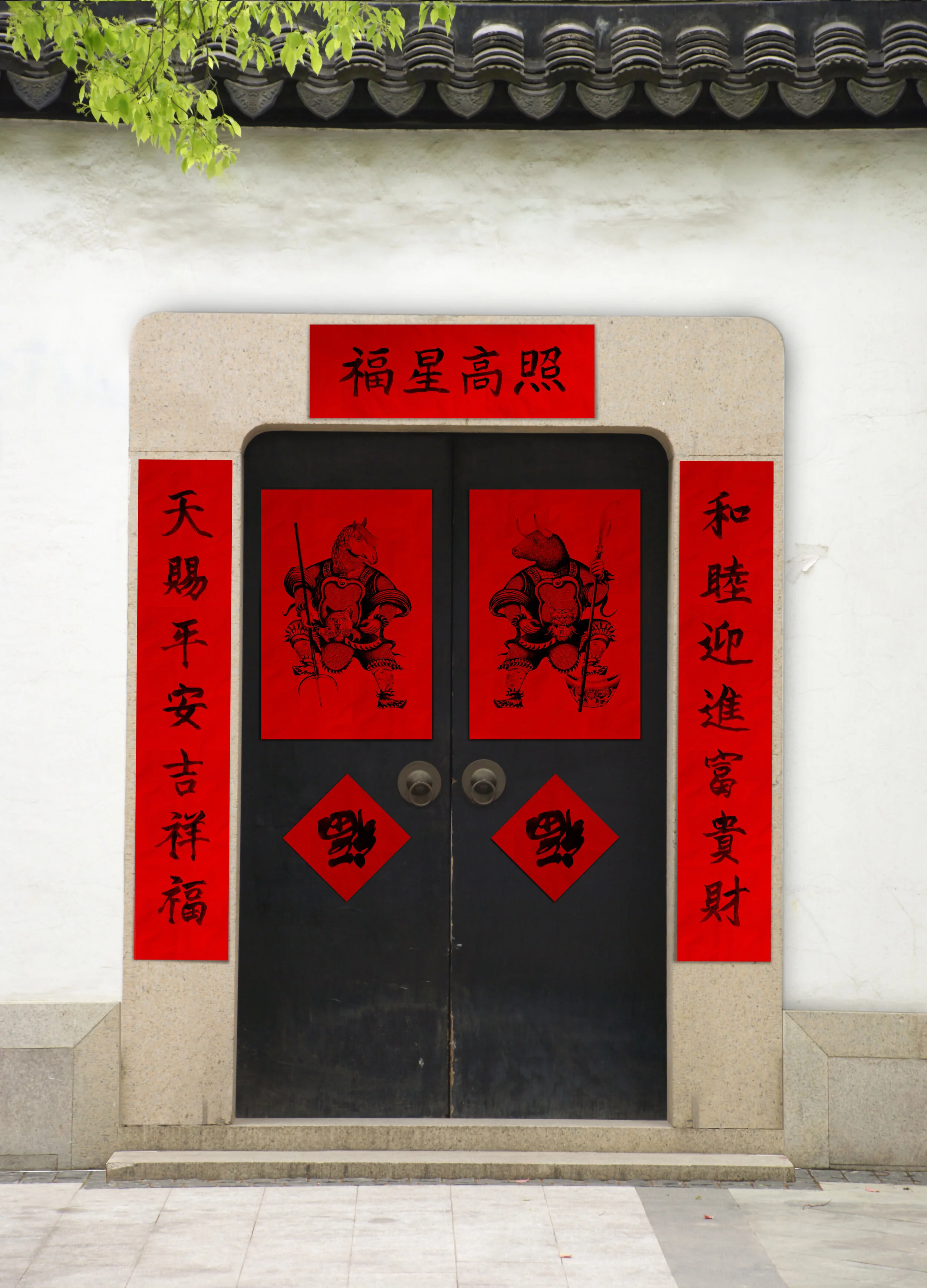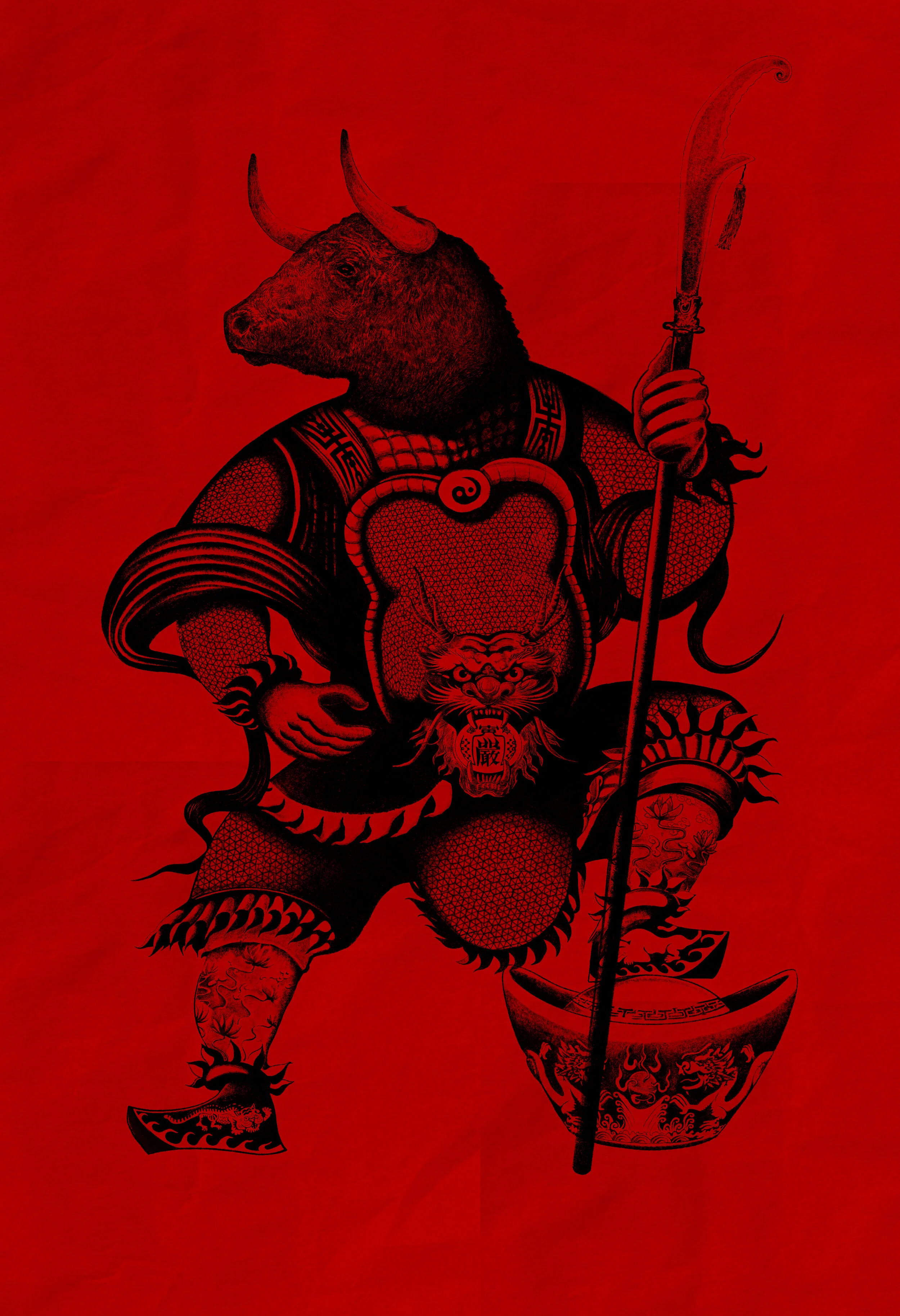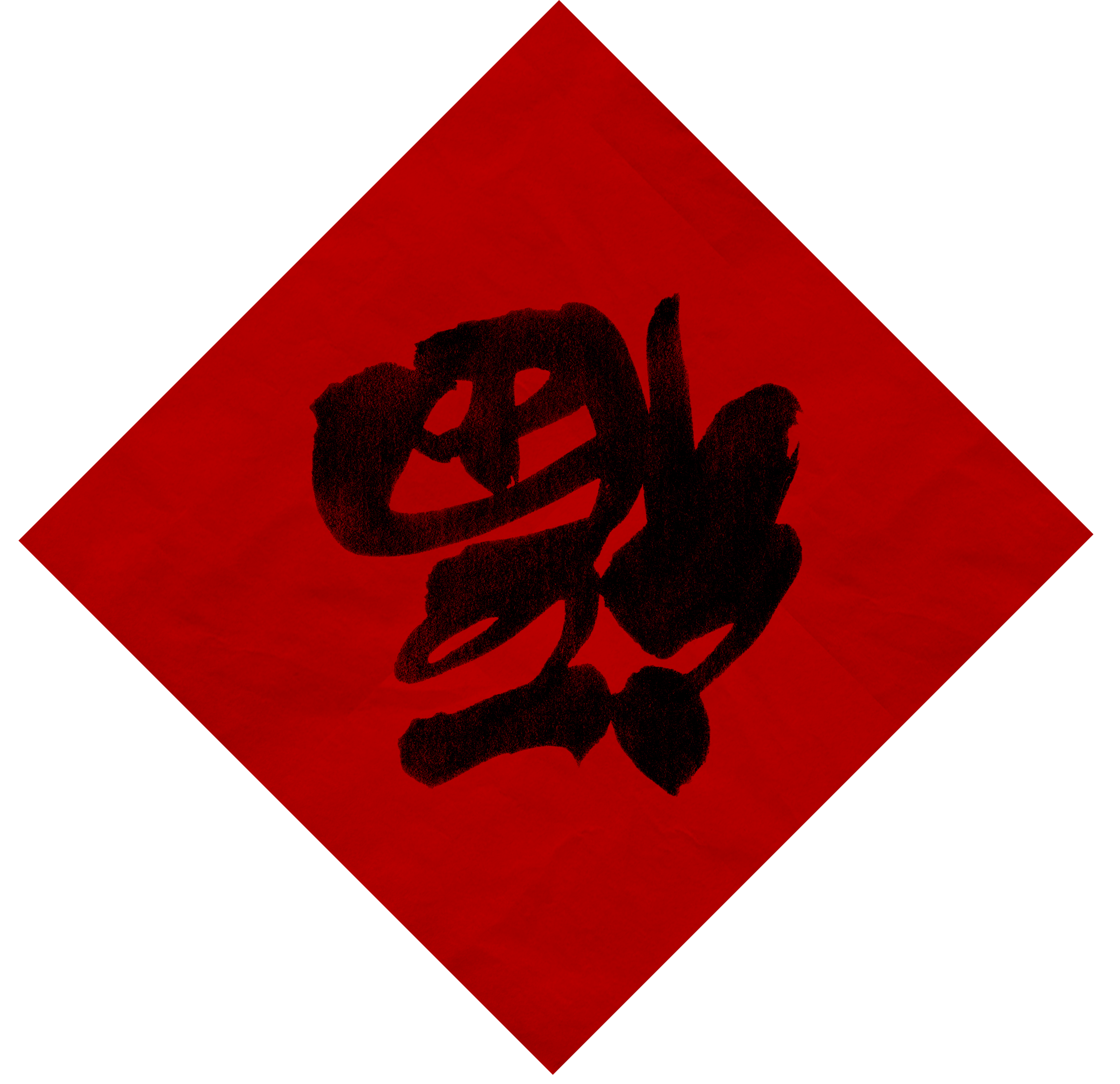Chinese New Year Decorations
Chinese Folk Religion and Mythology Through Design
This Chinese New Year decoration set was inspired by Chinese folk religion and mythology, as well as an exploration of my own cultural heritage through design. This is a complete set of posters and scrolls made specifically to adorn the doors, threshold, or walls of a home, along with a set of six red envelopes and four paper talisman charms to ward off any bad spirits!
This project features meticulously hand-drawn digital posters as well as hand-done ink and brush traditional Chinese calligraphy.
Menshen (門神) or Door Gods are the divine guardians of doors and gates meant to protect the home against malevolent spirits or to encourage the entrance of benevolent ones. Traditionally, the door gods were represented as deified historical figures such as military generals or legendary folk heroes. The horse and ox figures are an allusion to Ox-Head and Horse-Face, the guardians of the underworld in Chinese mythology. The inclusion of the Ox also represents 2021 as the Year of the Ox within the Chinese Zodiac cycle.
"Door Gods" are displayed on doors to guard the entrance of the home from malevolent spirits.
2021 is the Year of the Ox in the Chinese Zodiac cycle.
Fai Chun (揮春) is a traditional decoration for the Chinese New Year. A Doufang (斗方) is a type of fai chun that is a square with its corners turned toward the four cardinal points. The character in the center, ““Fu” (福; Good fortune) is purposely hung inverted due to the play on the words “inverted” (倒) and “arrival” (到) which are homonyms. This is to suggest the arrival of good fortune and happiness.
The square's corners face the four cardinal points.
Inverted "福 [Fortune]" signals the arrival of good fortune.
The Hengpi (横批) or Horizontal Scroll is four-character idiom hung above the gate and is to be read first. Whichever direction the scroll is written determines the reading order and placement of the Upper Scroll (上联) and the Lower Scroll (下联). For this scroll, it is written from left to right.

Fortunate Star Shines Above
Duilian (對聯) or Antithetical Couplets originated in the Five Dynasties (907-923) and were once made from wood, but flourished during the later Ming and Qing Dynasties where red paper was used and is still used today. It is considered an important cultural heritage of China. These couplets consist of seven-character poetic verses that play off each other in both meaning and tone as a form of counterpoint. Over time, the writing of couplets evolved to become a game of intellectual and linguistic wit, as much as a display of Traditional Chinese calligraphy.
A couplet is made up of two lines of verse which are called the "head" and "tail", which should correspond with each other phonologically and syntactically word for word and phrase for phrase. The Upper and Lower scrolls read as follows:
Heaven sends peace and prosperous blessings
天賜平安吉祥福
Harmony invites wealth
and abundance
和睦迎進富貴財
Hongbao 紅包 (or 利事) or Red Envelopes are perhaps the most ubiquitous gift used in Chinese and other East and Southeast Asian societies. They are typically given during social and family gatherings like as weddings and holidays such as the Chinese New Year. Paper money is inserted into the envelopes and given out by elders to the younger generation (or from the married to the unmarried.)
Happy New Year
Heart's Desire come to Fruition
May Your Wishes Come True
Wish You Good Health
Great Luck Great Profit
Propitious Wind on the Journey
Lingfu (靈符) are Chinese Talismans historically used by Daoist priests in the form of written or painted paper charms. The usage of these talismans was meant to engage with the supernatural, often times used as summons of deities and spirits, as well as the exorcism of demons. The written forms are “magical” scripts invented by the priests through the stacking and combining of traditional Chinese characters.
The system of writing on Daoist talismans are invented by the individual priests, and consists of stacking or combining traditional Chinese characters to create new ones.






![Inverted "福 [Fortune]" signals the arrival of good fortune.](https://images.squarespace-cdn.com/content/v1/5eb315ba5372df6b0b6bad1d/acdc913a-98a5-4835-ab44-17fdc572c56d/DiamondCouplet_Inverted_Final.png)








